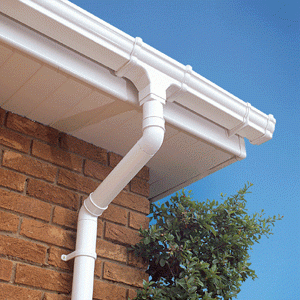
Professional Gutters
Add a review FollowOverview
-
Founded Date April 2, 2016
-
Posted Jobs 0
-
Viewed 11
Company Description
A Step-By’-Step Guide To Picking Your Top Guttering
The Essential Guide to Top Guttering: Choosing the Right System for Your Home
Guttering plays a vital function in any building structure, directing rainwater away from the roof and foundation, therefore preventing potential water damage. With many types and designs readily available on the market, it can be overwhelming for property owners or contractors to ascertain which guttering system is best fit for their particular needs. This post will explore the different guttering choices, their advantages, installation factors to consider, and maintenance pointers to ensure longevity.
Understanding Guttering: A Critical Home Component
Guttering is typically located along the eaves of the roof and is an essential element of a home’s drainage system. It is designed to record rainwater and guide it into downspouts, which bring the water far from the foundation of the home. Ignoring gutter maintenance can lead to substantial repairs with time.

Common Guttering Materials
-
Aluminum:
- Lightweight and rust-resistant
- Can be painted to match home color
- Available in seamless alternatives to reduce leaks
-
Vinyl:
- Affordable and light-weight
- Rust resistant
- Restricted color choices and might end up being fragile in severe weather condition
-
Steel:
- Extremely resilient and lasting
- Resistant to harm
- Requires routine painting to avoid rust
-
Copper:
- Highly durable and aesthetically pleasing
- Develops a special patina over time
- Pricey and challenging to set up
-
Zinc:
- Highly resistant to corrosion
- Can last 80 years or more
- Typically needs professional installation
Various Types of Guttering Systems
| Type | Description | Pros | Cons |
|---|---|---|---|
| K-Style | Flat bottom with rounded edges | Supports more weight, provides various sizes | Can maintain particles in corners |
| Half-round | U-shaped style | Visual appeal, simple to clean | Less capability, can be more expensive |
| Box gutters | Typically internal, constructed into roofs | Large capability, can fit older homes | More intricate installation |
| Constant | Seamless guttering solutions | Less joints and less dripping | Needs customized devices for installation |
The Benefits of Proper Guttering
A well-designed guttering system offers various advantages:
- Water Damage Prevention: Diverts water far from the roof and structure, lowering the risk of leaks, mold, and rotting wood.
- Structure Protection: Prevents soil disintegration and keeps the ground around the structure stable.
- Insect Control: Deters the development of pools of standing water that draw in pests like mosquitoes.
- Increased Property Value: Functional and visually pleasing guttering enhances the overall appearance of a residential or commercial property, making it more appealing to possible buyers.
Installation Considerations
When deciding on a guttering system, consider the list below elements:
-
Climate:
- Heavy rains or snow may require a robust gutter system with bigger capability.
-
Roof Configuration:
- Complex roof styles might necessitate custom-fit gutters.
-
Looks:
- Choose colors and designs that complement your home’s architecture.
-
Budget:
- Factor in the initial cost and long-lasting maintenance requirements.
-
DIY vs. Professional Installation:
- Skilled property owners may choose DIY installation, but complicated systems or hard-to-reach areas might be better suited for professionals.
Maintenance Tips for Longevity
To guarantee that guttering systems operate optimally, regular maintenance is essential. Here are key maintenance tasks every homeowner need to think about:
- Regular Cleaning: Clear out leaves, dirt, and particles at least two times a year to avoid blockages.
- Look for Leaks: Inspect item joints and fittings for leaks or indications of wear.
- Ensure Proper Slope: Gutters ought to be graded at the proper slope for reliable water drainage.
- Seasonal Inspections: After heavy storms or snowmelt, look for any damage or sagging.
- Consider Gutter Guards: Installing guards can decrease debris accumulation and reduce cleaning requirements.
FAQs about Guttering
Q1: How typically should I clean my gutters?
- A1: It is typically advised to clean gutters a minimum of two times a year, usually in the spring and fall.
Q2: What can occur if I disregard gutter maintenance?
- A2: Neglecting gutter maintenance can result in extreme water damage, mold development, and expensive repairs.
Q3: How long do gutter systems usually last?
- A3: Gutter life expectancy varies with product: vinyl (20 years), aluminum (30 years), steel (20 years, with maintenance), and copper (over 50 years).
Q4: Can I set up gutters myself?
- A4: While experienced DIYers can set up gutters, aspects like height, intricacy, and local building regulations may call for getting in touch with a professional.
Q5: What are gutter guards, and do I require them?
- A5: Gutter guards are protective covers set up over gutters to prevent debris buildup. They can minimize maintenance demands but might not be necessary for all homes.
Picking the right guttering system is an essential choice for any property owner. By understanding the different types of materials, systems, and installation factors to consider, individuals can make informed choices that improve their home’s protection against water damage. Correct maintenance ensures that gutter systems remain effective, preventing considerable issues gradually. By welcoming a proactive approach, one can take pleasure in the benefits of a well-functioning gutter system for several years to come.
